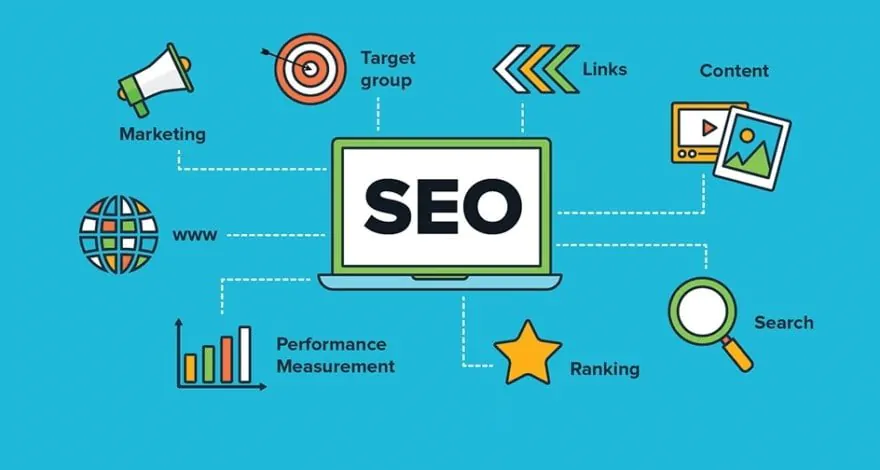Even if your site is already indexed by Google with some knowledge of basics SEO, now you can do even more to boost its visibility. More unusual situations that have an impact on Google Search will be clear as you manage and maintain your website. Here we will also understand advanced SEO techniques, such as transitioning to a new domain or handling content for multiple languages.
Manage Google’s indexing and crawling of your site.
If you want to debug issues or anticipate Search behaviour on your site, you should read our guide to understanding how Search works.
Duplicate Content
Crawling and indexing of your site are both impacted by canonical pages, so it’s important that you know what they are and make sure you tag them properly.
Resources
- Make sure that no robots.txt rules are blocking Googlebot from accessing any resources (images, CSS files, etc.) or pages that Google is meant to crawl.
- The URL Inspection tool will indicate that inaccessible pages were not crawled, and the Index Coverage report will not include them. It is only at the URL level that blocked resources are revealed; this is done through the URL Inspection tool.
- If Google is unable to access vital page resources, it will be unable to index your site properly. You can check if Google sees your live page the way you intend by using the URL Inspection tool to render the page.
Robots.txt
- Crawling can be prevented with robots.txt rules and facilitated with sitemaps.
- Avoid having your server overloaded by preventing crawling of duplicate content or unimportant resources (like small, frequently used graphics such as icons or logos).
- To prevent your site from being indexed, use the noindex tag or secure access instead of robots.txt.
Sitemaps
- Sitemaps are crucial for facilitating the crawling of non-textual content and informing search engines about the importance of your site’s most important pages (such as images or video).
- Google won’t limit crawling to pages listed in your sitemaps, it will prioritise crawling these pages.
- For frequently updated sites or those with content that isn’t easily accessible via links, this is of paramount importance. Creating a sitemap and submitting it to Google helps the search engine find and prioritise the most important pages on your site for a crawl.
Multilingual or Globally-focused websites
- If your site is bilingual, or if you’re trying to attract visitors from a specific country: Control sites with regional or linguistically specific content.
Tell Google about your site’s multilingual support with the hreflang tag. - If the pages on your site change their content depending on the user’s location, then if Googlebot claims to be based in a particular country, you should treat it the same way you would any other user based in that country.
- This means that if you don’t want users in the United States to see your content, but you do want visitors from Australia to see it, your server should deny access to a Googlebot that appears to be coming from the United States, but give access to a Googlebot that appears to be coming from Australia.
Migrating a page or a site
On the occasion that you might need to move a single URL or even a whole site, follow these guidelines:
- Modifying Just One URL
- Remember to set up permanent 301 redirects for any page you relocate permanently. If the relocation is only temporary, tell Google to keep crawling your site by sending a 302 status code.
- You can improve the user experience by serving a personalised 404 page when a visitor tries to access a page that has been removed. It’s important to return a genuine 404 error rather than a soft 404 when a user navigates to a page that no longer exists.
- Migrating a Complete site
- Complete the necessary 301 redirects and sitemap updates if migrating an entire site, and then notify Google of the change so that we may begin crawling the new site and forwarding your signals. Figure out how to migrate your website.
Follow crawling and indexing best practices
- Make your links crawlable. In order for Google to follow a link, the link must be enclosed in an <a> tag with a href attribute. Links that use other formats won’t be followed by Google’s crawlers. Google will not follow <a> links that do not contain a href tag or other tags that function as links due to the presence of scripted click events.
- Prevent your quality signals from being passed on to low-quality sites or paid links from diluting your own by using the “rel=nofollow” meta tag on them.
- Managing your crawl budget:
- Because Google may not be able to crawl your entire site as often as you’d like if it contains hundreds of millions of pages that change occasionally or perhaps tens of millions of pages that change frequently, you may need to direct Google to the most important pages on your site.
- The most efficient method currently available is to prioritise which pages you want crawled by search engines and only include links to those pages in your sitemaps.
- Use of JavaScript:
- Design page for users, not search engines. When designing your site, consider users without JavaScript-capable browsers (for example, people who use screen readers or less advanced mobile devices).
- One of the easiest ways to test your site’s accessibility is to view it without JavaScript or in Lynx. Viewing a site as text-only can help you find content Google can’t see, like text embedded in images.
- If your article spans multiple pages, make sure that readers can easily navigate between them by including clear “next page” and “previous page” buttons (and that these are crawlable links).
- Provide a paginated version of the page if you want Google to be able to crawl it if it has an infinite scroll. Find out what you can about infinite scroll pages that are optimised for search engines.
- Prevent users from reaching URLs that lead to a state change, such as those used for commenting, creating accounts, adding items to a cart, etc. In order to prevent access to these URLs, use the robots.txt file.
- Take a look at this list to see if the file format you need can be found in Google’s index.
- In the highly improbable event that Google appears to be crawling your site too often, you can reduce the crawl rate. This should, however, be a rare occurrence.
- For the sake of your users’ and your own privacy and safety, switching from HTTP to HTTPS is strongly suggested if your site is still using the older protocol.
Help Google understand your site
- Make sure the site’s most important information is presented in text form rather than as images.
- Google can read and index a wide variety of file formats, but the text on a page is still our best bet for understanding its meaning. Include structured data in your pages to help us understand them if they contain non-textual content or if you want to provide additional guidance about the content of the site (and in some cases, provide special search features such as rich results).
- Following the developer guidelines, you can add structured data by hand if you’re familiar with HTML and basic coding. If you need a help, the WYSIWYG Structured Data Markup helper can automatically generate some simple structured data for you.
- If you can’t add structured data to your pages, you can still tell Google what different parts of a page represent by using a tool called “Data Highlighter” (an event, a date, a price, and so on). Though straightforward, this may become unreliable if your page’s structure is altered.
Follow our guidelines
Indicators for the particular content
Here are some tips for optimising your site for search engines if you have certain content types:
- Video :
- Make sure that each video is available on a public web page.
- Create a dedicated page for each video.
- Include your video in an appropriate HTML tag.
- Create a video sitemap to make it even easier for Google to find your videos
- Ensure that the page doesn’t require complex user actions or specific URL fragments to load.
- Make sure that your videos are visible and easy to find on your video pages.
- Podcasting:
- Your RSS feed must be accessible by Google.
- Your feed must have at least one episode.
- Use a supported audio format for your episodes, and episodes must be available to Google.
- You must provide an image for your podcast.
- You must follow the RSS guidelines for Google Podcasts.
- Podcast image
- Podcast description
- Owner email
- Link to a homepage for the podcast
- Images:
- Make sure that your visual content is relevant to the topic of the page.
- Whenever possible, place images near relevant text.
- To ensure maximum accessibility of your content, keep text in HTML, provide alt text for images.
- Users search on Google Images more from mobile than on desktop.
- Create good URL structure for your images.
- For children:
- In order to comply with the Children’s Online Privacy Protection Act, you must clearly label any pages or sites that contain content intended solely for children (COPPA).
- Adult sites:
- To prevent your site (or specific pages) from showing up in SafeSearch results, you may want to label them as “adult.”
- News:
- Get familiar with the Google Publisher Center’s.
- A News sitemap will speed up Google’s indexing of your site’s articles.
- Make sure that your site is secure from abuse.
- If you want to provide a limited number of views to visitors without a subscription or login use flexible sampling.
- Use indicate subscription and paywalled content on your site to Google while still enabling crawling.
- Use meta tags to limit text or image use when generating search result snippets.
- Consider using AMP or Web Stories for fast-loading content.
Manage the user experience
- User experience directly impacts your search engine rankings.
- Prefers to switch to HTTPS. Chrome allows users to label as “not secure” any website that loads over the less secure HTTP protocol.
- The satisfaction of your site’s visitors is typically greater if your page loads quickly, Core Web Vitals report can give you an overview of your site’s performance as a whole. AMP is another option to speed up your webpages.
Taking Mobile devices into account
- Now that mobile searches have surpassed desktop ones, it’s crucial that your site is optimised for mobile use.
- Google now uses a mobile crawler as the default crawler for websites.
Manage how you show up in search results
- Google Search offers a wide variety of customization options for users, including review stars, embedded site search boxes, and specialised result types for information categories like events and recipes.
- If you’d like your site’s favicon to appear in search engine results, you can do so.
- You may also specify a date range for your article to be included in related searches.
- Help Google provide good titles, links, and snippets.
- Control the amount of text and images included in search engine result snippets with the help of meta tags.
Implementing Search Console
- Utilize the Google Search Console wide variety of reports to track and enhance your site’s performance in the search engine’s results pages.







